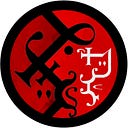Animals of the Hades Badlands
Hades’ badlands are hostile to life and, one could say, to reality itself. And yet, there is an ecosystem: the basis for life are some grasses, mosses, and small insects that are immune to the effects of the Black Cubes. The current hypothesis is that these organisms were native to Hades when it was one of the Hells, even if there is no mention of them in the Scriptures and it’s unclear why and how they would have been created.
The Hades grasses are banal and dull in appearance, they vary slightly in color and size but they usually have a yellowish tint and a small size, as they were constantly malnourished. Insects and vermins, like grasshoppers, beetles, and worms are indistinguishable from their relatives elsewhere, except to the trained eyes of guides and Scholars.
Still, there is some usefulness: the grasses, especially the tall varieties growing around ponds and marshes, can be weaved: baskets, carpets, and wicker objects in general act as shields to the influences of the Cubes, making them crucial tools to everyone daring to explore the badlands.
Besides the native species, there are some animals and plants that, thanks to mutation and accelerated evolution caused by the Collapse, adapted to the Hades Badlands.
One way to be protected from the effects of the cubes is to live underground, shielded by the soil itself. The Horned Gophers build huge subterranean colonies, leaving them only when strictly necessary. These colonies are extremely complex, both architecturally and socially, reminding of ant colonies: there is a caste of fertile female and male (“prince” and “princesses”) and a caste of androgynous workers that provide for them. There are also chambers where mushrooms are grown, analogous to some ants’ behavior. One of the mushrooms they tend to is the Ego Truffle. This truffle is tasty and nutritious but it’s more notable for its ability to cause a sort of hallucination: those who eat it lose the sense of self and feel like one with everything, as there are not any borders between mind and reality. It’s a brief sensation but has some people addicted to it.
Another way to protect oneself from the cubes is to use the grass as cover. The Three-Eyed Ibis make nests out of the weeds of the badlands and spend there a lot of time, even out of the reproduction season. Their third eye supposedly makes them see the area of influnces of the cubes allowing them to find the safest places to spend time probing the ground for small insects and worms. They choose to live near the “indigo” cubes, which have the least direct impact on the body. The ibis are the symbol of the Voronoi guide as they can show you the right path if you just follow them.
The Mosaic Dogs have bodies full of redundant organs that shift places during their life creating complex entanglements on the mana fields that shield them from the unraveling effects of the Black Cubes. The most evident manifestation of this is their fur, made of different patterns and textures, that will change times and times again during their lifetime. The Mosaic Dogs’ “defense” has its limit and these animals prefer to live on the border of the region. Their hunting method is to push their prey out of the woods and into the badlands and then follow them until exhaustion and the effects of the cubes have the better of them. They seem to sense vaguely the Cubes’ effects, probably as smells.
